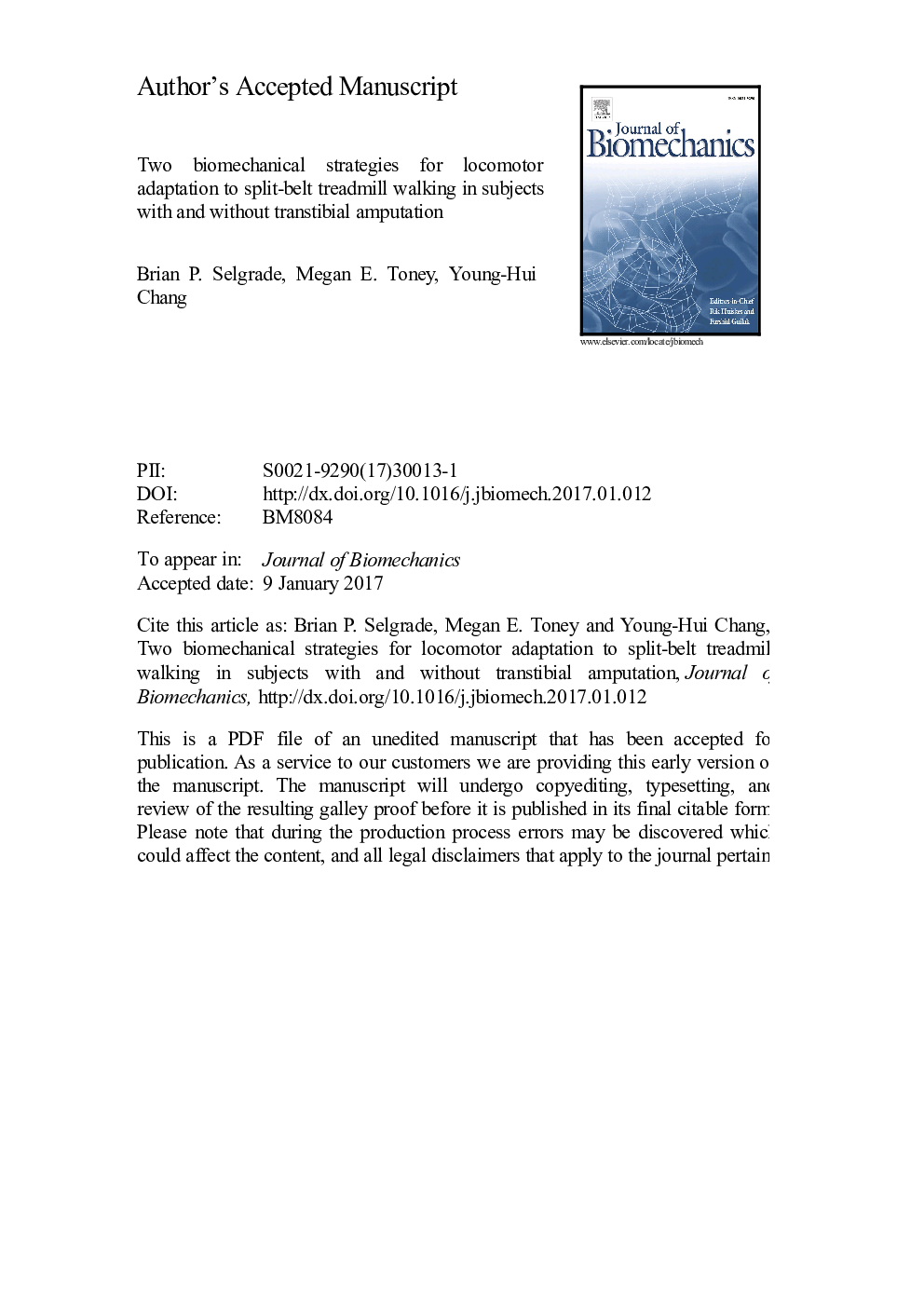| کد مقاله | کد نشریه | سال انتشار | مقاله انگلیسی | نسخه تمام متن |
|---|---|---|---|---|
| 5032203 | 1471111 | 2017 | 23 صفحه PDF | دانلود رایگان |
عنوان انگلیسی مقاله ISI
Two biomechanical strategies for locomotor adaptation to split-belt treadmill walking in subjects with and without transtibial amputation
دانلود مقاله + سفارش ترجمه
دانلود مقاله ISI انگلیسی
رایگان برای ایرانیان
کلمات کلیدی
موضوعات مرتبط
مهندسی و علوم پایه
سایر رشته های مهندسی
مهندسی پزشکی
پیش نمایش صفحه اول مقاله

چکیده انگلیسی
Locomotor adaptation is commonly studied using split-belt treadmill walking, in which each foot is placed on a belt moving at a different speed. As subjects adapt to split-belt walking, they reduce metabolic power, but the biomechanical mechanism behind this improved efficiency is unknown. Analyzing mechanical work performed by the legs and joints during split-belt adaptation could reveal this mechanism. Because ankle work in the step-to-step transition is more efficient than hip work, we hypothesized that control subjects would reduce hip work on the fast belt and increase ankle work during the step-to-step transition as they adapted. We further hypothesized that subjects with unilateral, trans-tibial amputation would instead increase propulsive work from their intact leg on the slow belt. Control subjects reduced hip work and shifted more ankle work to the step-to-step transition, supporting our hypothesis. Contrary to our second hypothesis, intact leg work, ankle work and hip work in amputees were unchanged during adaptation. Furthermore, all subjects increased collisional energy loss on the fast belt, but did not increase propulsive work. This was possible because subjects moved further backward during fast leg single support in late adaptation than in early adaptation, compensating by reducing backward movement in slow leg single support. In summary, subjects used two strategies to improve mechanical efficiency in split-belt walking adaptation: a CoM displacement strategy that allows for less forward propulsion on the fast belt; and, an ankle timing strategy that allows efficient ankle work in the step-to-step transition to increase while reducing inefficient hip work.
ناشر
Database: Elsevier - ScienceDirect (ساینس دایرکت)
Journal: Journal of Biomechanics - Volume 53, 28 February 2017, Pages 136-143
Journal: Journal of Biomechanics - Volume 53, 28 February 2017, Pages 136-143
نویسندگان
Brian P. Selgrade, Megan E. Toney, Young-Hui Chang,